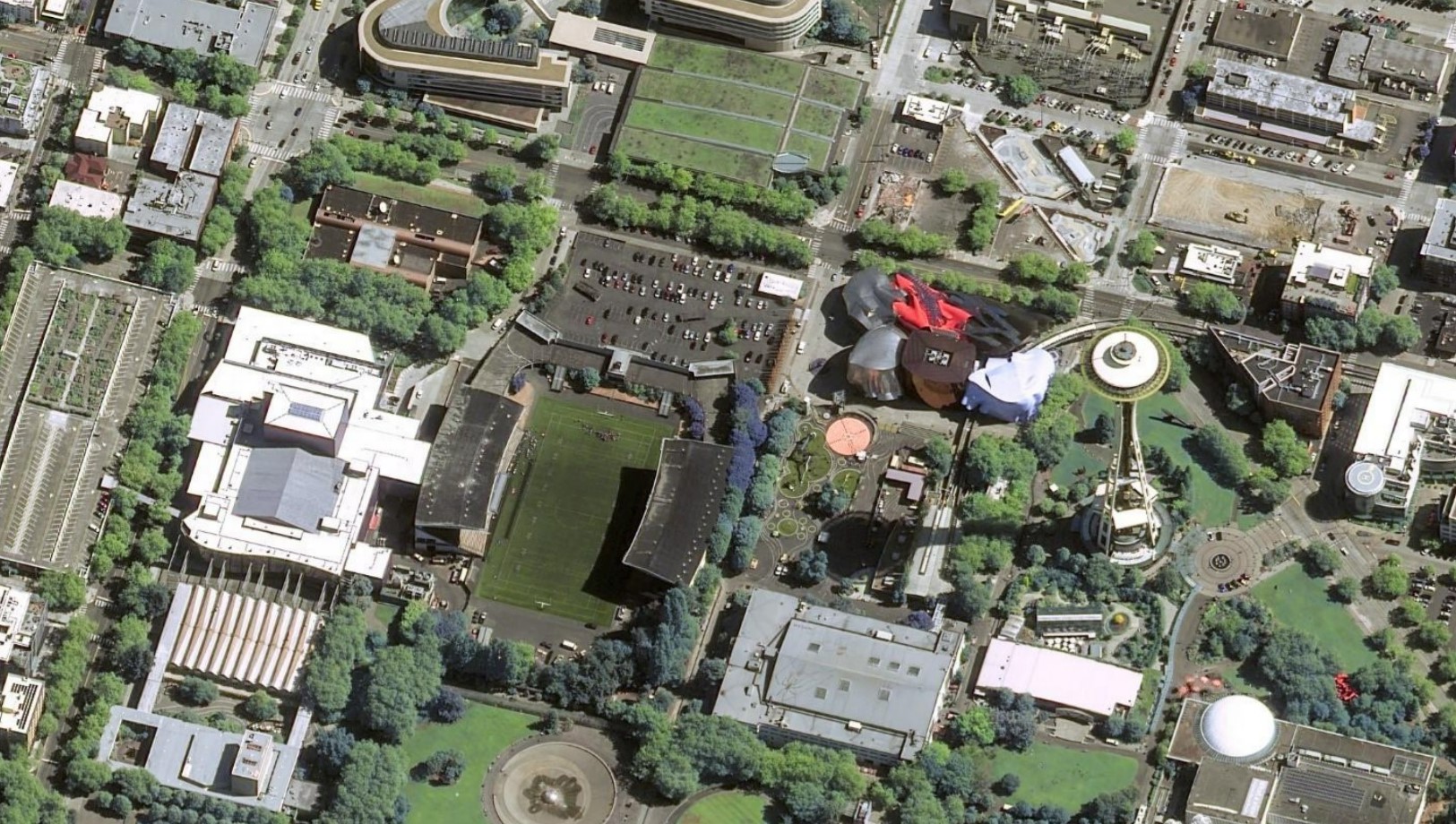[ad_1]

One year after Microsoft expanded its Azure cloud domain to the final frontier, the company is taking another giant leap in its campaign to build a digital ecosystem for the space community.
Today, Azure Space is lifting the curtain on a new array of space-centric offerings, including satellite imagery from Airbus, software-based communication links from ST Engineering iDirect and geospatial data analysis from Esri, Blackshark.ai and Orbital Insight.
Microsoft is also unveiling a couple of in-house tools to enhance satellite images.
Taken together, the enhancements should provide more possibilities for solving problems on our home planet, said Stephen Kitay, senior director of Azure Space.
“What we’re focused on is bringing the space community and cloud together,” Kitay told GeekWire. “Our purpose is to innovate faster, to help these companies innovate faster and democratize the benefits of space, because ultimately space is critical to life here on Earth.”
Satellite data has long been crucial for national security purposes — for example, to track Chinese military exercises or Russian troop movements. Emergency agencies can also use overhead imagery to coordinate the response to disasters ranging from floods and wildfires to refugee migrations.
Now commercial enterprises are now realizing that satellite imagery, combined with other geospatial data, can also point the way to better crop outlooks and smoother supply chains.
“Supply chains are extremely important to all of us, with what’s happening in the world right now,” Kitay said. “You’ll be able to monitor and analyze ports using spaceborne data, understand how many ships are at the port, how many containers are on the ships, do the math to understand how many trucks would then need to get the containers out of the ports.”
Azure Space’s new offerings are aimed at beefing up the space assets available to Microsoft’s cloud customers, delivering those assets more efficiently, and providing the analytical firepower that’s needed to extract insights from the torrent of space-based data that’s now available:
- Azure Maps will start incorporating high-resolution imagery from Airbus satellites including SPOT, Pleiades and Pleiades Neo, along with elevation data from the WorldDEM dataset. The resolution for Pleiades Neo imagery is 30 centimeters (1 foot) per pixel — not quite good enough to read a license plate, but good enough to tell a car from a truck.
- Azure Orbital is going into public preview, which means that anyone can communicate and control their satellite networks from ground stations operated by Microsoft and its partners. KSAT is the first of those partners to go online, but the network will continue to expand early next year with support from ViaSat and USEI.
- Azure Orbital is partnering with ST Engineering iDirect to make software-based radio tools more available for space and satellite communications. iDirect specializes in satellite modems that work on the principle of virtualization — that is, moving functionality from proprietary hardware into software that can be deployed on general-purpose hardware to deliver a more cost-efficient solution for customers.
- Three new partners will boost the Microsoft Azure’s capabilities for geospatial data analysis: Esri will work with Azure Orbital to streamline workflows for handling spaceborne data. Blackshark.ai’s advanced geospatial intelligence and 3-D synthetic environments will be incorporated into Azure. And Orbital Insight’s GO data analysis platform will become available on Azure as well.
- Microsoft Research has found ways to enhance satellite imagery using artificial intelligence. SpaceEye can uses radar data from the European Space Agency’s Sentinel-1 mission as a baseline for transforming cloud-obscured satellite images into cloud-free images. Project Turing can use machine learning to heighten the resolution of satellite images. The technology is already being used to enhance Bing Maps worldwide.


Judging by all this activity, it might sound as if Microsoft is encroaching on the market segments currently occupied by satellite operators and geospatial intelligence companies such as Maxar, Planet and BlackSky. But Kitay doesn’t see those companies as competitors.
“They are absolutely potential partners, because what we’re trying to do is enable an ecosystem, and bring together those in the industry on our platform,” he said. Kitay pointed to Azure Space’s collaboration on cloud connectivity with SpaceX’s Starlink satellite service and SES’s O3b service as another example of ecosystem-building.
“What you’ll see us continue to do is grow our partnerships, grow this ecosystem to ultimately serve the customers with multiple options in a resilient cloud-enabled platform,” he said.
There’s one company that Azure Space isn’t likely to enlist as a partner: Amazon.
Amazon Web Services has its own aspirations for cloud-enabled space services (or should that be space-enabled cloud services?), with an ecosystem that includes AWS Ground Station, AWS Space Accelerator and AWS for Aerospace and Satellite. Amazon is also well into the planning stages for its Project Kuiper broadband satellite constellation.
When Kitay was asked about the rivalry with AWS, he indirectly alluded to Project Kuiper as the sort of thing Azure Space won’t be doing.
“I would say that we are taking a strategically unique approach with the partner ecosystem that we are building out, where we’re not actually building and launching satellites,” he said. “We’re partnering with others who do, to enable this ecosystem built on the Azure cloud.”

